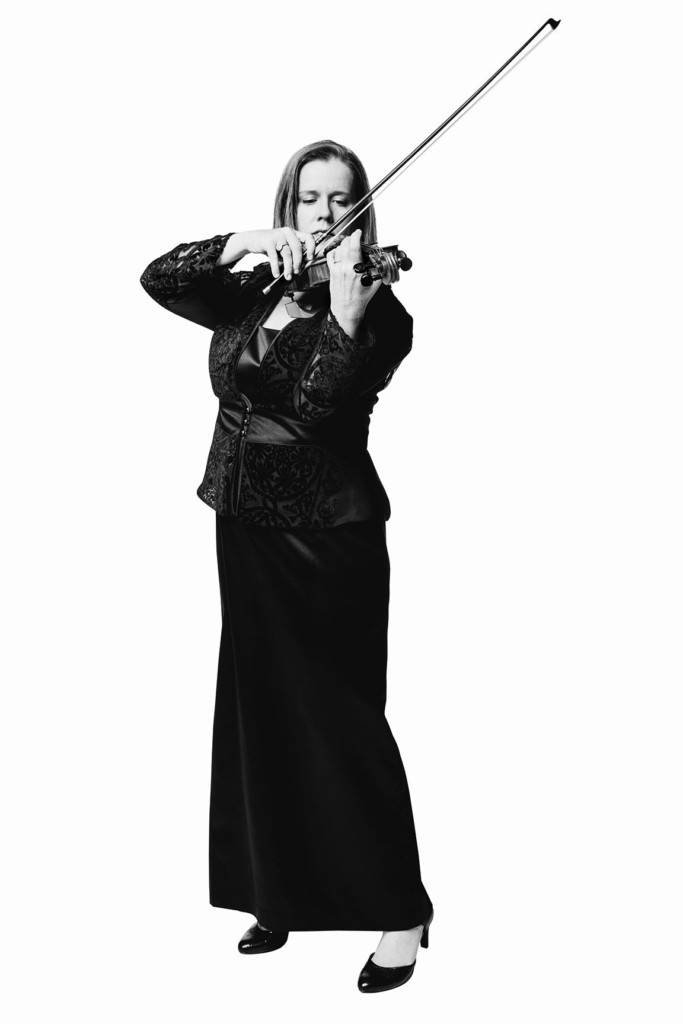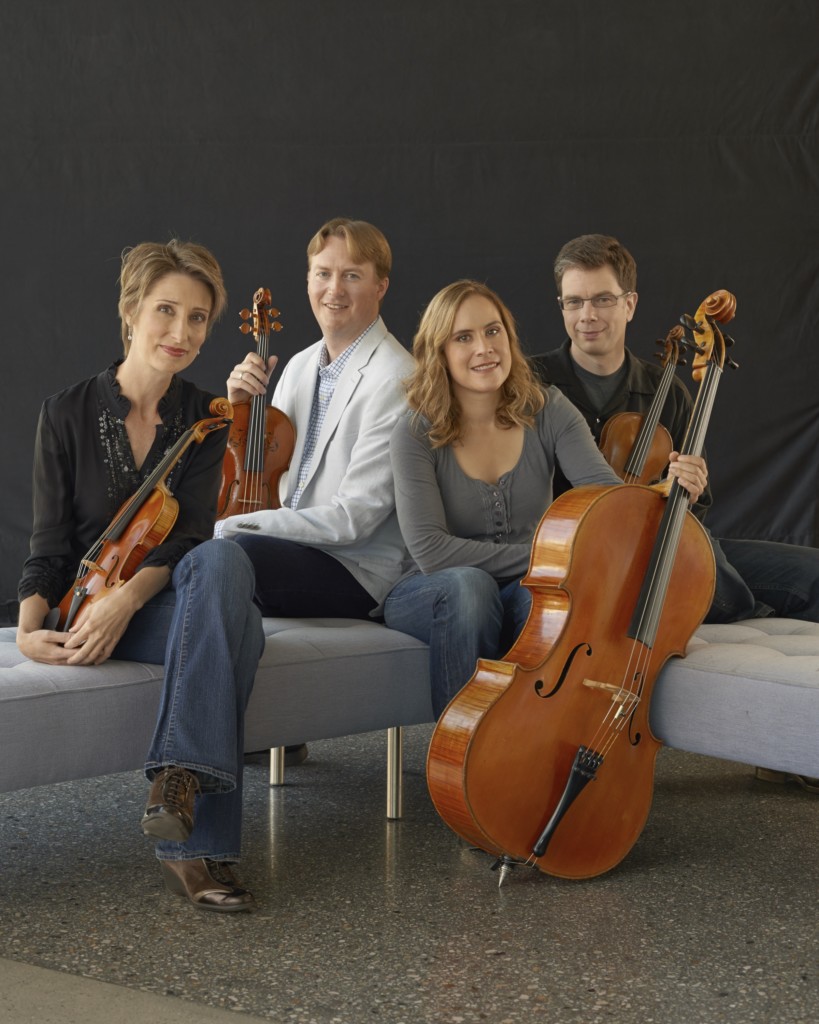A newly commissioned short piece for brass quintet by a young composer, along with a short composition for flute and piano by his father and works by two of the greatest French composers will mark the first subscription concert of NOVA Chamber Music Series’ 40th anniversary season.
Black Wind by Nicolas Chuaqui is a short work commissioned by NOVA for brass quintet (two trumpets, two trombones, and French horn) that reflects the sharp and precise imagery which defines so much of his musical output. Chuaqui is inspired simultaneously by the natural forces that have sculpted the southern Utah landscape and by those more insidious human-driven dynamics that threaten the integrity of these lands. As he notes, “A ‘black wind,’ though, like smog or acid rain, would be something we created, destroying the natural world and leaving behind toxicity that remains deep into the future.”

The work will be premiered Oct. 29 at 3 p.m. in the Libby Gardner Hall on The University of Utah campus. The concert will feature various performers including Madeline Adkins, concertmaster of the Utah Symphony; the Fry Street Quartet, flutist Mercedes Smith and pianists Jason Hardink and Kimi Kawashima.
Chuaqui, who is working on his doctorate at the Eastman School of Music at the University of Rochester in New York, is familiar to many members of the Salt Lake City music scene. He is the son of Miguel Chuaqui, who heads up The University of Utah’s school of music.
The younger Chuaqui already has carved out his own distinctive niche as a composer, even as he has shared many of his father’s creative interests, including electroacoustic music. While the elder Chuaqui has expanded his interests both as a composer and as a researcher to interactive modern dance elements and software development for therapeutic music applications such as pain management, the younger composer has been intrigued by memory and how time and other senses such as nostalgia shape it. His rapidly growing output includes works for small and large ensembles, as well as choral works, some of which show the influence he absorbed during his time as a chorister at the Madeleine Choir School at the home cathedral of the Catholic Diocese of Salt Lake City. The NOVA premiere is the fourth commission the young composer has received within the last year.

Among his most recent works is the 2016 chamber opera The Forest of Dreams which focuses on the story of the lost colony of Roanoke, a subject that still mystifies archaeologists and historians. The curious twist in Chuaqui’s libretto for the opera is that rather than tell the story in a traditional chronological arc, he instead relies on a retrospective approach and the opera focuses on the psychological impact and trauma John White, the colony governor, might have endured upon returning to find Roanoke deserted.
The elder Chuaqui, who was born in California and was raised in Chile, is no stranger to NOVA audiences. In the spring of 2016, Trance for Cello and Electronics was performed. This concert will feature Interim Directions, a 2015 work scored for flute and piano that coincided with his tenure as interim director of The University of Utah’s music school (before being named to the permanent post). The composition, which runs a little more than five minutes, readily conjures up the vibes of short-lived transitions and temporary roles, where musical ideas are introduced but then cast aside by an expression that contrasts what immediately preceded it.
But, it still has a fully developed form that belies the tentativeness suggested by the title. He says, in his program note, that Interim Directions is “one of several examples in my music in which I contrast bluesy ‘American’ sounding material with quasi diatonic (“major scale”) passages, representing the dualities of my background as a fully American and a fully Chilean composer.” The work, which the Salty Cricket Composers Collective commissioned, was premiered at the chamber music commission concert of the 2015 Utah Arts Festival.

The elder Chuaqui has a diverse, distinguished portfolio of music, with works in chamber, vocal, and electroacoustic forms that have been performed throughout the U.S. as well as abroad. Among his most notable commissions are works for the Fromm Foundation at Harvard University, the Koussevitzky Foundation at the Library of Congress, the Utah Arts Council (NEA), Meet the Composer, and from U.S. and international performers and ensembles. His works are available on recordings from Centaur Records, New World Records, and Albany Records.
One of the most unusual yet also one of the most impressive examples of late French Romanticism is the Concerto in D Major for violin, piano and string quartet, Op. 21, by Amédée-Ernest Chausson, a composer whose reputation was growing just as his life abruptly ended in 1899 at the age of 44 in a bicycle accident. Born seven years before Claude Debussy and two decades before Maurice Ravel, Chausson produced some of the most exquisite compositions of the late Romantic period, even though his output was rather limited — a considerable achievement given that he did not start composing in earnest until he was 25.

While there are piano and string sextets in the chamber music literature, the Chausson concerto, premiered in 1892, is rare not only because of its unique instrumentation in chamber music but also for the solo violin and piano parts that are pitted against the string quartet. The concerto is in four movements, with the first marked Décidé. The piano introduces a motif figure of three octave chords played loudly, which then is picked up in quieter form by the string quartet as accompaniment and then bridged into the main musical theme of the first movement. The movement highlights extensively the solo violin and piano parts with the quartet clearly playing the accompanying role. The second movement is a Sicilienne which pays tribute to the elegant baroque dance form that often was found in the 18th century chamber concerti by French composers such as Jean-Philippe Rameau and François Couperin.
The third movement, marked Grave, opens in an elegiac mood with descending semitones played by the piano in octaves and then the equally doleful theme articulated by the solo violin and undergirded by the quartet’s own lamenting commentary. But then Chausson warms the theme with a touching rising passage in the solo violin and the movement closes on that characteristically exquisite sound of a composer whose musical poetry is a unique esoteric experience. The final movement switches up the mood completely, marked Très animé, with a propelling syncopated feel and the work ends in a glorious blaze that echoes the exuberance of one of his teacher’s most famous works (César Franck’s Symphony in D minor from 1888).

Two of Ravel’s most famous works – Pavane pour une infante défunte (1899) and La Valse (1920) – will be performed in four-hand piano arrangements by Hardink and Kawashima. The four-hand piano transcription of La Valse is a rare treat, as the work was originally scored for full orchestra and was to be performed as a ballet for Sergei Diaghilev’s Ballet Russes. The work comprises waltzes that initially sound very much like Johann Strauss II but then are quickly shadowed by increasingly ominous tones and the tight musical structures gradually deteriorate into a noisy musical combat that parallels the end of empires which came with World War I.

The Pavane, which Ravel originally wrote for piano and then expanded the six-minute work into an orchestral arrangement a decade later, is not intended as a mournful piece but as a nostalgic throwback – the baroque dance form — to a princess character which Ravel remembered seeing in a painting by Diego Velázquez, the 17th century Spanish artist. Some of the confusion arose because the French title’s literal translation suggested a dead child but, in fact, it translates most closely to a dance for a princess from a time long ago.
Tickets for this concert and NOVA’s entire gallery and subscription series for the 40th anniversary season are available here.

